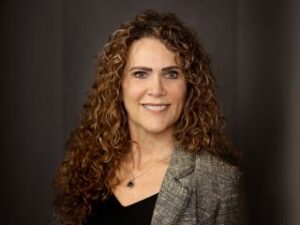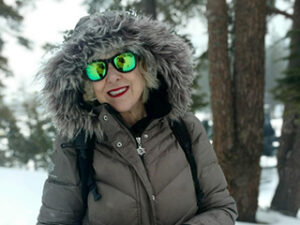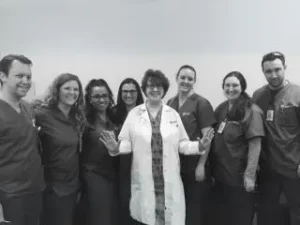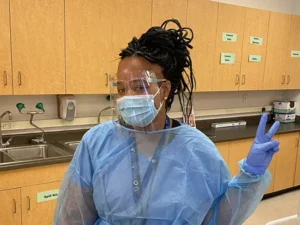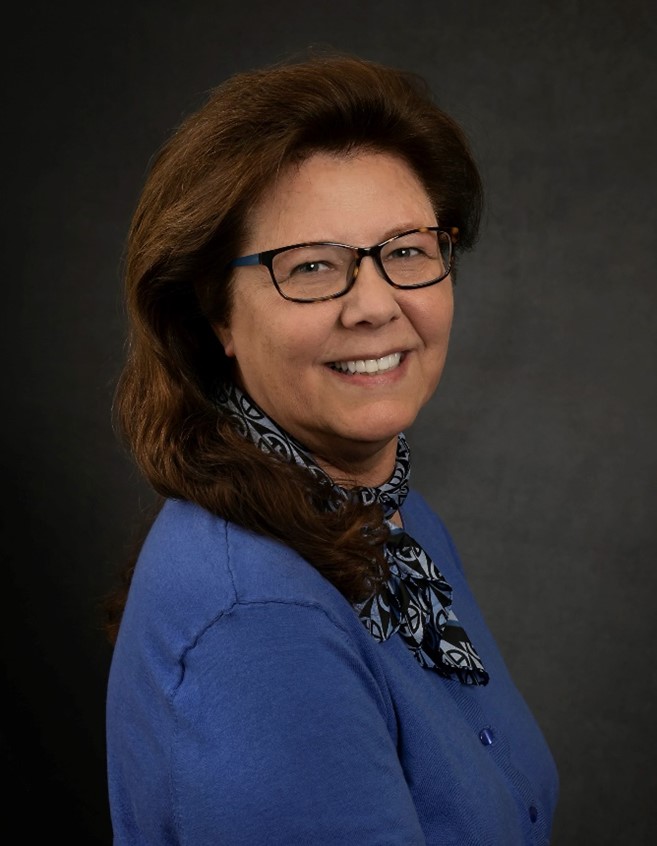 Wanda O’Harra recently celebrated her 16-year anniversary of being a Dental Hygiene instructor at the Boise campus of Carrington College. Wanda was nominated for the faculty spotlight by Rachel Watkins, Dental Hygiene Program Director. The two have been friends for 15 years, since meeting while teaching, and completing a bachelor’s degree together.
Wanda O’Harra recently celebrated her 16-year anniversary of being a Dental Hygiene instructor at the Boise campus of Carrington College. Wanda was nominated for the faculty spotlight by Rachel Watkins, Dental Hygiene Program Director. The two have been friends for 15 years, since meeting while teaching, and completing a bachelor’s degree together.
“Wanda has been an amazing member of the faculty and has a great outlook on teaching and helping our students succeed,” Rachel says. “She is very balanced and cares about outcomes, but also cares a great deal for the students and is a master at connecting with them.”
It was a pleasure to speak with Wanda, and to hear more about her experience in the field and with her students.
Wanda, what is your current role at Carrington College?
I’m an instructor in the Dental Hygiene program. I teach in clinics, part-time, and I also teach a class. The Dental Hygiene program has a clinic set up to serve patients from the community—we are assigned five students (or fewer) to teach as they work on patients.
I also teach Ethics, Jurisprudence, and Dental Hygiene Practice in a classroom. So, students have combined hours of lecture classes, plus clinical hours. They wear scrubs all day long on campus; on some days they have a combination of clinic and lectures, and other days it’s one or the other.
Going back to the beginning of your career, how did you know that you wanted to work in the dental hygiene field?
I enjoyed biology sciences in school. My sister became an RN, and that too influenced me to enter the dental/health field. In high school I worked at the hospital part time, which gave me insight into the harder side of nursing. I checked out dental hygiene schools, and there happened to be one close to where I lived. The positive part of choosing dental hygiene was that you didn’t have to work on holidays or overnight. You could get out of school and make just about the same amount of money, but with less stress than in nursing.
What was your path to teaching like? How did you know you wanted to teach?
I started as a dental hygienist working in private dental offices, then taught in clinic only. After getting my BA, I began to teach lecture classes. In the beginning I had only my associate degree, which teachers in this field commonly had back then when they began teaching.
I had moved back to Boise in 2007 after being away, and at the time it was very difficult to find a dental office hygiene job—the area had been flooded with hygienists because there were several dental hygiene programs in this area. I ended up temping at a dental office and one of the hygienists there recommended I check out teaching at Apollo College (now Carrington College). So, I did. I became a teacher there and found out that I loved teaching. I had such a good time interacting with the students. I watched and learned over the years, discovered what worked and what did not, and I loved it.
The Dental Hygiene program is an intense and concentrated program. The students make friends for life in the program because they are together for it all—hours in clinic and classes, studying together, and often going through tough life stuff while in school. There are about 30 students in each class—and they help each other through it all.
What is your favorite part of your job?
I would say interacting with the students is my favorite part. I also learn a lot from them, and being their teacher has made me stretch and grow in so many ways.
For example, I’m not an extravert, but I had to become comfortable with public speaking to teach in the clinic and the classroom. Eventually, the job also called for me to write speeches and speak for pinning ceremonies, standing in front of hundreds of people. When I stand in front of an audience to speak in those situations, I’m not looking at the friends and family—I am looking at the students, and I know every single one of them.
This position has helped me to do and achieve many things. I never would have gone back for my bachelor’s degree if I hadn’t taught. It’s helped me learn and keep up with technology, too, allowing me to connect and interact with more people.
What is the most challenging part of the job?
When students can’t make the grade, that is tough. When you have to talk to them about failing an exam or failing the whole program, because that does sometimes happen, that’s really hard. When you watch a student who is already so invested, and you see signs that it’s either not the right timing or the right profession for them…that’s hard, too.
I run into former students almost every week and it is so fun to see them and talk to them about where they are working and how things are going for them. Sometimes they come in to speak or visit us and say hi to instructors. We have a pretty good rapport with our students.
Do you have any advice for students just beginning in the program?
One of the things we try to emphasize to students is this: this program is a total commitment. You can’t just dabble and work a lot of hours and try to go to school. It will take sacrifice—it may be time with your kids, money, time with others—but someone is going to make a sacrifice for you to complete this program, and it is bigger than you realize. Students get out in as few as 19 months with an associate degree. The attraction to such a short program is that it is short, and you don’t have to come in with your college prerequisites. In that short amount of time, you can prepare to go out there and make your money. This degree opens doors for you that wouldn’t otherwise be open.
Do you have any advice for students who might want to try teaching in the field?
We recommend they get three or four years of experience out in the field first, to practice skills and technique. Then they start part time in the clinic, which helps them get comfortable with teaching, before we give them a class to teach.
I always tell new instructors who are shadowing me that students receive your information and perform better if you don’t try to intimidate them. Let them know you care and make them comfortable. I love to add humor and make it a relaxed interaction. Let them know that we all make mistakes and it’s how we learn.
